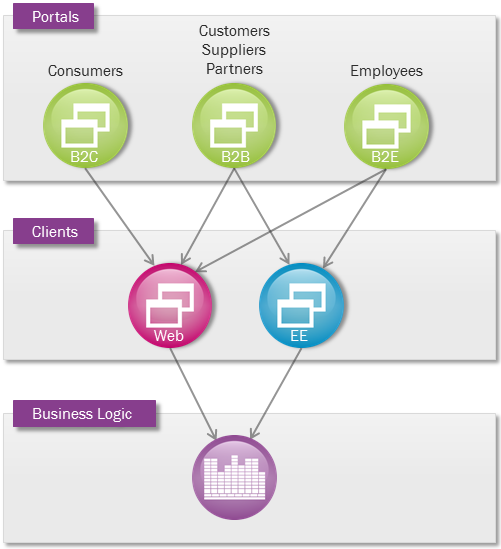| Foundation1 / Overview / Webclient / |
The IFS Web Client and Portal presents an intuitive and easy-to use web interface to users. Portals provide a role-based overview, tailored for each individual. From the portal, users can open detail pages to perform business activities.
The IFS Web Client and Portal interface is a true web interface in which the pages are made up of only HTML, style sheets and JavaScript™. Therefore it is "zero installation" and supports Internet Explorer, Mozilla and Chrome browsers. By the use of style sheets and replaceable images the user interface is highly customizable. The result is a rich client that enables straightforward management from a security and deployment perspective, making it easy to extend access to customers and suppliers.
IFS Web Client runs in a Java EE compliant application server and can be deployed behind optional proxies, Apache, or IIS web servers. Authentication of users can either be handled by the web server or performed by IFS Applications against a Database or Active Directory.
As a platform IFS Web Client includes development frameworks and tools, as well as common parts of the web user interface. IFS Web Client is used for presentation logic and user interface layout. The user interface built on IFS Web Client runs in parallel with other user interfaces.
Web interfaces for business applications are useful for multiple user groups. A Business-To-Employee (B2E) interface is used as an alternative fully functional user interface for employees. A Business-To-Business (B2B) interface lets external customers, suppliers, and partners perform relevant business activities from anywhere in the world. Finally an increasing number of Business-To-Consumer (B2C) web sites interact directly with the business application to provide richer services. IFS Web Client is focused on B2E and B2B. Support for B2C is limited.

For B2E and B2B web interfaces, IFS Web Client provides an intuitive and consistent user interface. Perhaps the most important feature is the IFS Personal Portal where each user can configure their own personal view of business application functionality, Internet content, and other data sources. The Personal Portal also serves as a navigation hub for the rest of the business application.